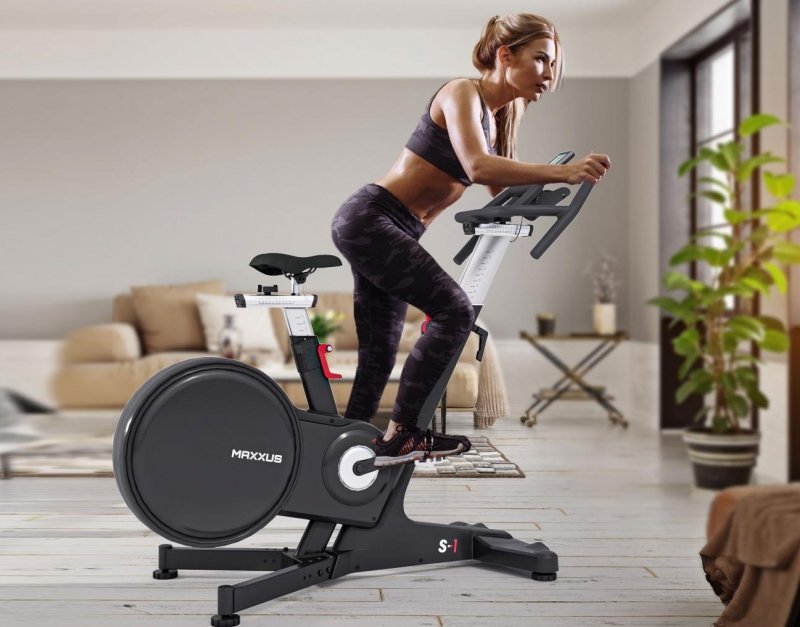You’ll undoubtedly feel the burn when properly working out on a stationary bike. This burn is a sign that your muscles are engaged and being exercised, but which muscles are getting targeted exactly?
From this article, you will learn what muscles an exercise bike work and what type of bike to choose if you wish to focus on specific muscle groups.
Besides the heart, the leg muscles come to mind first for most people. Still, several other muscles all over the body get action too.
Today, we’ll take a closer look at these muscles to thoroughly answer the question, “What muscles does an indoor exercise bike work?” and help you choose the right type of stationary bike for your needs.
Muscles in Your Legs and Thighs
Ever since indoor exercise bikes became a thing, the main focus of the equipment was to work the lower body, particularly the legs, and thighs.
Your lower body simply can’t escape the attention of a stationary bike. After all, the muscles in the legs and thighs provide the necessary power to pedal the bike, pushing forward, down, backward, and up.
In your legs and thighs, four primary muscle groups get worked as follows:
The Quadriceps
This group of 4 large muscles is located at the front side of the thigh. The quad muscles, also known as quadriceps femoris, form the heaviest muscle group across the entire body.
The quadriceps are most engaged during the action of pushing the pedal forward and down (the downstroke).
The Hamstrings
This group of 3 long muscles is located at the back of the thigh. The hamstring muscles start at the hip and extend to the knee.
The hamstring muscles are most engaged during the action of pushing the pedal down and backward and then pulling it up (the upstroke).
The Calves
The triceps surae, commonly known as the calf muscles, is a group of muscles on the lower legs’ back side. It consists of 2 muscles -the gastrocnemius and the soleus- that merge at the base and into the Achilles tendon of the heel.
The calves are engaged during both the downstroke and the upstroke of the pedal.
The Tibial Muscle
This is the largest and thickest muscle located on the front of the legs. It extends below the knee to the beginning of the ankle.
The tibial muscle is most engaged during the action of raising the pedal.
Muscles in Your Hips and Glutes
The muscles in the hips and the butt contribute majorly to the power generated by your body to enable the motion of cycling.
Strengthening these muscles can help improve your form on the bike, increase your pace, and boost comfort.
These muscles include the psoas major, gluteus maximus, tensor fasciae latae, and gluteus minimus.
Muscles in Your Back
The lower back area stabilizes your torso and supports your upper body while cycling as you lean forward at the hip.
The main muscles of the lower back are the Erector Spinae, Multifidus, Latissimus Dorsi, and Spinalis. To optimally engage these muscles and help strengthen them, your spine should remain straight as you bend forward.
Muscles in Your Core
This is a group of muscles in the trunk that surround the abdomen, spine, and hip. Some of these muscles that are located over the stomach are commonly known as abs.
Tip! The recumbent bike engages the core muscles the most.
If you train on a spin bike to optimally engage your core muscles, you should hinge from the hips, maintain proper posture, and resist leaning on the handlebars.
Muscles in Your Arms
Finally, exercising using a stationary bike can also give your upper arm muscles a little workout. These muscles mainly include the triceps and biceps.
While racing on a spin bike – switch between seated/standing positions, lean forward and hold the handlebars. Your arm muscles are engaged to support your upper body and help keep it in the proper stance.
Pro tip! The air bike is a unique indoor bike type that allows you to perform an intense upper-body workout on a bike.
Do Different Types of Stationary Bikes Work Different Muscles?
While all sorts of indoor exercise bikes will give your body a good level of workout, some types focus on certain areas more than others.
For example, classic saddle stationary bikes are great for engaging lower body muscles in the legs and thighs. They’re also effective for strengthening the core and back muscles but not so much for the arm muscles.
Recumbent bikes are good for working muscles in the legs and abdominal region. However, due to their more comfortable ride, these stationary bikes aren’t very effective for the muscles in the back or arms.
On the other hand, air bikes can help you engage all types of muscles we’ve mentioned above, along with arm muscles.
Final Thoughts
Riding an indoor exercise bike will give your heart a fantastic workout, but cardiac muscles aren’t the only type of muscles that get engaged during stationary cycling.
An indoor bike can also strengthen and engage the muscles in your legs, thighs, hips, butt, core, and arms.
